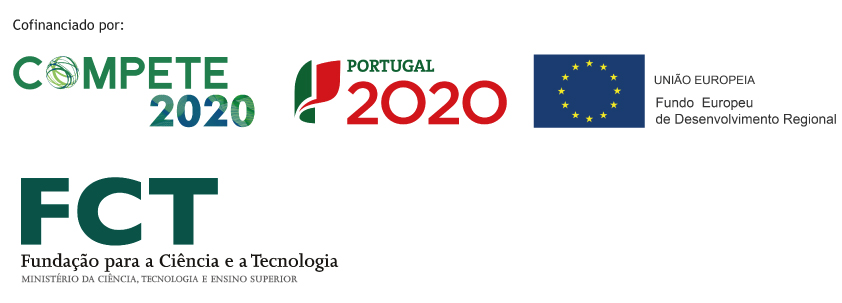Comp4TA
Advanced Metal-Diamond Composites for thermal application
Challenge
Cu-based composites have been used in the manufacture of components for the electronics and mold industries, where heat extraction is a critical parameter. However, copper does not meet the requirements of high hardness and low coefficient of wear, required in some particular applications, for example in the manufacture of plungers for molds. These components require high thermal conductivity (for an efficient heat extraction), associated with good physical, mechanical and tribological properties, namely a low coefficient of thermal expansion, high hardness and a low coefficient of friction (to withstand wear). The use of aged Cu-based alloys reinforced with diamond particles is a possible way to overcome this limitation. Since its high thermal conductivity makes this material suitable for the manufacture of components where heat extraction is a determining factor.
Solution
Main Objective:
To strengthen research, technological development and innovation.
In this project we propose to develop new materials based on a textured Cu-Be-Co alloy, reinforced at the surface by functionalized diamond particles of different sizes. The process of fabrication is innovative and consists of:
(i) Texturing of the matrix by laser;
(ii) Functionalization of diamond particles by means of a low-melting Cu-Sn-Ti alloy, by two different techniques (sputtering and mechanical alloying);
(iii) Incorporation into the textured Cu-Be-Co surface by laser.
In order to assess the impact of this new production technique on the final properties of the obtained materials, samples of this composite will also be made by conventional powder metallurgy. A Cu-Be-Co alloy substrate and a composite coating consisting of the Cu-Be-Co alloy and the functionalized diamond particles will be consolidated / sintered by uniaxial hot pressing.
Objectives, Activities and Results expected / achieved
Achieves Results:
Along Comp4Ta project several novel results related to the composite surface design on CuBeCo substrate in the form of 3D laser textured mosaics with optimized wear resistance have been achieved. The innovation on these kinds of surfaces has been possible thanks to the optimization of the dimensions of the slots, which allowed define the appropriate reinforced area density, and the design of specific carbides-reinforced Cu-Sn-Ti brazing alloys able to increase the adhesion of the reinforcements of diamond whiskers within the proposed 3D composite surface. For it, several mixtures of diamond whiskers (10 and 30 wt.%) and brazing alloys based on Cu-XSn-YTi (5 <=X<= 20 and 5 <=Y<= 20) system have been mechanically alloyed in presence of two different stearic acid concentrations (1 and 3 wt.%) to promote the nucleation of TiC on the surfaces of diamond whiskers, since the presence of these carbides allows enhancing their wettability within the brazing alloy, thus increasing the adhesion resistance of the diamond whiskers within the slots. The optimization of the parameters related to the mechanical alloying process (time and velocity), the stearic acid concentration, together with the different Sn/Ti concentrations proposed, led to defining the Cu-10Sn-15Ti brazing alloy matrix as the suitable one to promote the development of high content of TiC on the surface of the diamond whiskers (30 wt.%).
The tribological properties of the diamond-reinforced mosaics performed on CuBeCo substrates have been evaluated in extremely abrasive conditions, using for it, high-frequency reciprocating tests, and aluminium oxide and soda-lime glass balls as counter bodies. The results show as reinforced density areas higher than 40 % filled up with 30% by weight of diamond whiskers brazed with the carbide-reinforced Cu-10Sn-15Ti alloy can improve the wear resistance of unmodified CuBeCo surface by about 80 and/or 88 %, depending on the compaction achieved during the sintering process performed by Hot Isostatic Pressing (HIP).
The applicability of these new composite surfaces, as well as the most outstanding results, have been disclosed at international congresses; Euromat, as well as by writing articles published in Peer Review Journals (Q1) within the tribological fields of Refractories and Hard Metals, Tribology and Powder Metallurgy.
Project Reference
POCI-01-0145-FEDER-030416Funding

Intervention Region
North (47,34%), Center (52,66%) of PortugalTotal Investment
238.913,06IPN Investment
125.822,81Total Eligible
238.913,06IPN Eligible
125.822,81EC Funding – Total
FEDER - 203.076,10EC Funding – IPN
FEDER - 106.949,39National public financial support – Total
OE - 35.836,96National public financial support – IPN
OE - 18.873,42Duration
36 MonthsStart Date
2018-06-01End Date
2021-12-30Approval Date
2018-02-27Consortium
Universidade do MinhoInstituto Pedro Nunes
BA Vidro
Keywords
Glass molds;Metal-Diamond composites;
Laser texturing;
Particles funcionalization.










